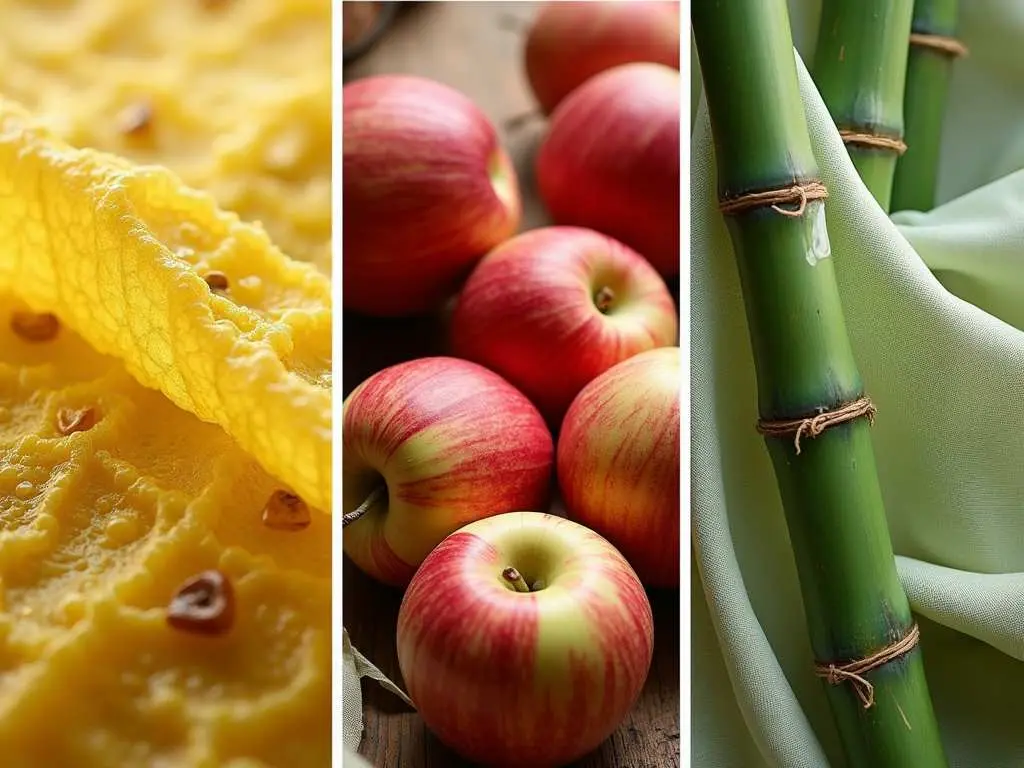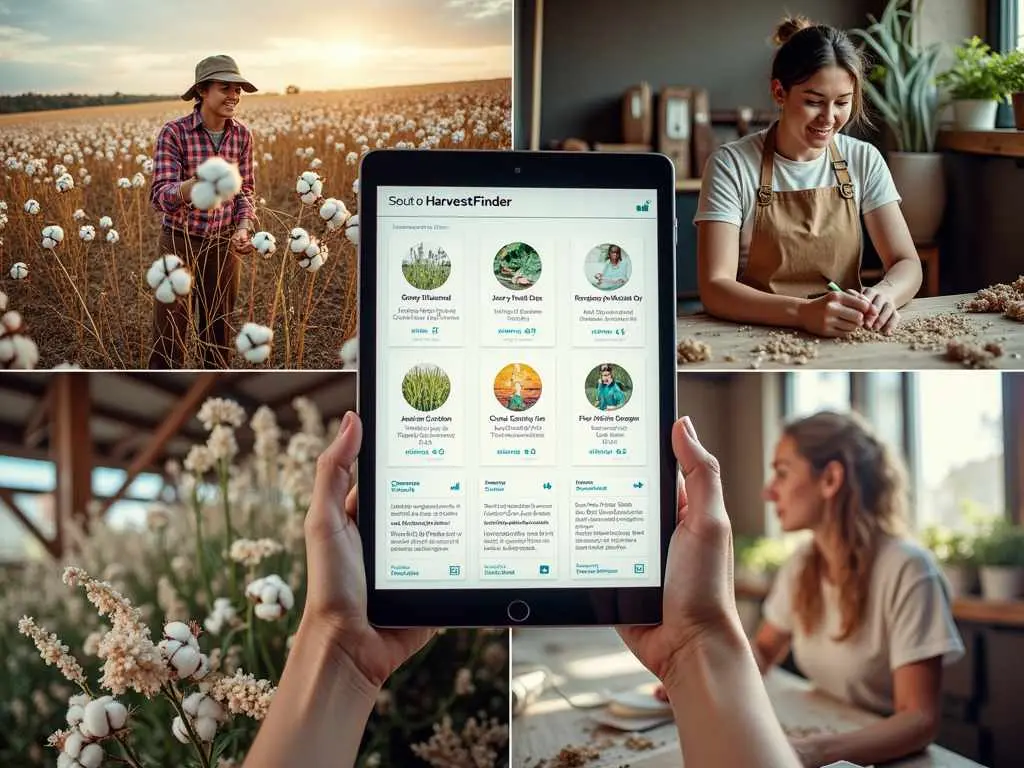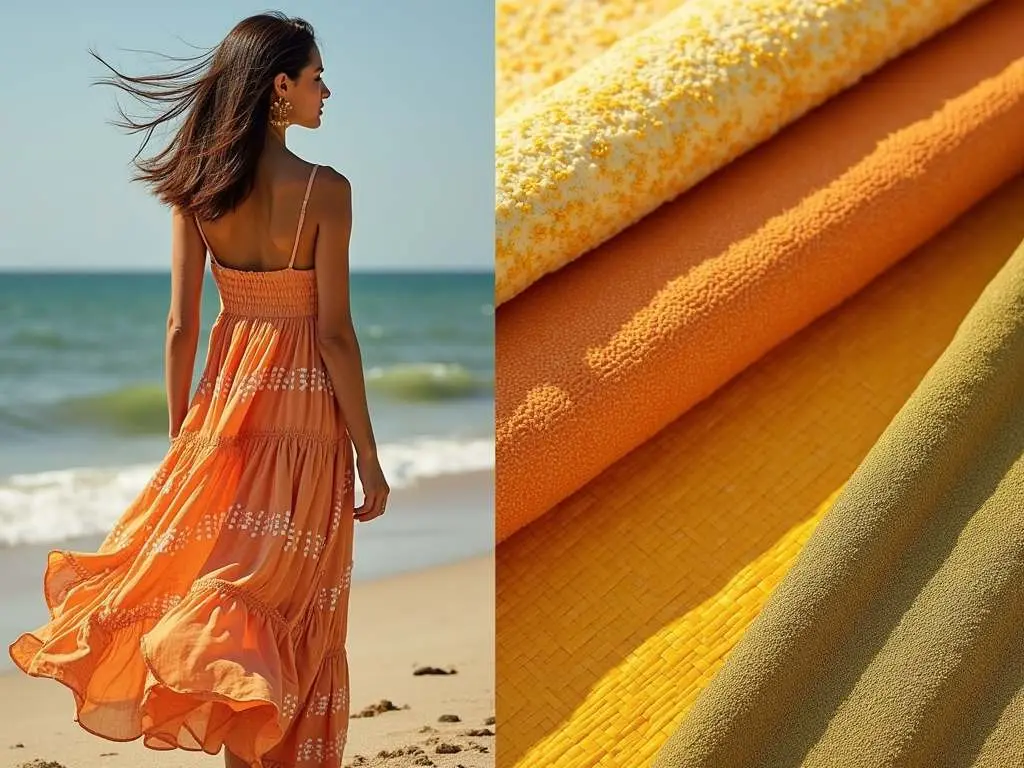Nature’s bounty offers an incredible array of materials for sustainable fashion. At HarvestFinder, we connect you with artisanal producers who cultivate and harvest these materials at their peak. From organic cotton to innovative plant-based fabrics, discover how flora is revolutionizing the fashion industry and shaping a more sustainable future for style.
The Rise of Plant-Based Fashion Materials
The fashion industry is experiencing a green revolution, with plant-based materials taking center stage. This shift is driven by increasing consumer demand for sustainable and eco-friendly products. According to a report by Grand View Research, the global sustainable fashion market size is expected to reach $9.81 billion by 2025, growing at a CAGR of 9.1% from 2019 to 2025.
Traditional Plant-Based Fabridcs
Organic Cotton
Organic cotton remains a cornerstone of sustainable fashion. Grown without harmful pesticides or synthetic fertilizers, it offers a softer, more durable alternative to conventional cotton. HarvestFinder connects you with organic cotton farmers who prioritize soil health and biodiversity.
Benefits of Organic Cotton:
- Reduced water consumption
- No toxic chemicals
- Improved soil quality
- Better working conditions for farmers
Hemp
Hemp is making a strong comeback in the fashion world. This versatile plant requires minimal water and pesticides to grow, making it an excellent sustainable choice.
Hemp Fabric Properties:
- Durable and long-lasting
- Naturally antimicrobial
- UV-resistant
- Becomes softer with each wash
Linen
Derived from the flax plant, linen is one of the oldest known textiles. Its production requires minimal water and pesticides, making it an environmentally friendly choice.
Linen Characteristics:
- Highly breathable
- Moisture-wicking
- Naturally hypoallergenic
- Biodegradable
Innovative Plant-Based Materials

The quest for sustainable fashion has led to the development of innovative plant-based materials. These cutting-edge fabrics offer exciting possibilities for eco-conscious designers and consumers alike.
Pineapple Leather (Piñatex)
Piñatex, made from pineapple leaf fibers, is a revolutionary alternative to traditional leather. This innovative material utilizes agricultural waste, providing additional income for pineapple farmers.
Piñatex Features:
- Durable and flexible
- Water-resistant
- Biodegradable
- Cruelty-free
Apple Leather
Created from apple waste from the juice industry, apple leather is another innovative vegan alternative to traditional leather.
Apple Leather Properties:
- Soft and supple texture
- Durable
- Water-resistant
- Reduces food waste
Bamboo Fabric
Bamboo fabric, derived from the fast-growing bamboo plant, has gained popularity for its softness and eco-friendly properties.
Bamboo Fabric Benefits:
- Biodegradable
- Naturally antibacterial
- Moisture-wicking
- Thermoregulating
Sustainable Dyes from Flora
The fashion industry’s environmental impact extends beyond fabric production to the dyeing process. Traditional synthetic dyes can be harmful to both the environment and human health. Fortunately, plant-based dyes offer a sustainable alternative.
Natural Dye Sources
- Indigo: Derived from the indigo plant, this iconic blue dye has been used for centuries.
- Madder Root: Produces a range of red hues.
- Weld: Yields vibrant yellow shades.
- Logwood: Creates deep purples and blacks.
- Osage Orange: Offers warm, golden yellows.
Benefits of Natural Dyes
- Biodegradable
- Non-toxic
- Renewable resource
- Unique, complex colors
HarvestFinder connects fashion designers with artisanal natural dye producers, ensuring access to high-quality, sustainably sourced dyes.
The Role of Regenerative Agriculture in Fashion
Regenerative agriculture practices are gaining traction in the fashion industry as a way to not only reduce environmental impact but actively improve soil health and biodiversity.
Principles of Regenerative Agriculture
- Minimal soil disturbance
- Maintaining soil cover
- Crop diversity
- Integration of livestock
- Reduced use of synthetic inputs
Benefits for Fashion Materials
- Improved soil health
- Increased carbon sequestration
- Enhanced biodiversity
- Higher quality fibers
- Reduced water usage
HarvestFinder supports regenerative agriculture by connecting consumers with farmers who employ these practices in the production of fashion materials.
Challenges and Future Outlook
While plant-based fashion materials offer numerous benefits, there are still challenges to overcome:
- Scalability: Increasing production to meet growing demand while maintaining sustainability.
- Cost: Some innovative materials are currently more expensive than traditional options.
- Consumer Education: Raising awareness about the benefits of plant-based materials.
- Technical Performance: Improving certain properties to match or exceed those of synthetic materials.
Despite these challenges, the future of plant-based fashion materials looks promising. Ongoing research and development are leading to new innovations and improvements in existing materials. As consumer demand for sustainable fashion continues to grow, we can expect to see more widespread adoption of these eco-friendly alternatives.
HarvestFinder’s Role in Sustainable Fashion

At HarvestFinder, we’re committed to supporting the sustainable fashion movement by:
- Connecting designers and consumers with artisanal producers of plant-based materials
- Promoting transparency in the supply chain
- Supporting regenerative agriculture practices
- Educating consumers about the benefits of sustainable fashion materials
By choosing plant-based materials through HarvestFinder, you’re not just making a fashion statement – you’re contributing to a more sustainable and ethical fashion industry.
People Also Ask
Q: Are plant-based fashion materials as durable as synthetic ones?
A: Many plant-based materials, such as hemp and linen, are known for their durability. While some innovative materials are still improving, many can match or exceed the durability of synthetic alternatives.
Q: How can I identify sustainable fashion materials when shopping?
A: Look for certifications like GOTS (Global Organic Textile Standard) or OEKO-TEX. Also, check brand transparency about their material sourcing and production processes.
Q: Are plant-based dyes as vibrant and long-lasting as synthetic dyes?
A: While natural dyes may fade more quickly than synthetic ones, they often produce unique, complex colors. Proper care can help maintain their vibrancy, and many consumers appreciate their natural aesthetic.
Conclusion
The world of flora offers an incredible array of sustainable fashion materials, from traditional fabrics like organic cotton and linen to innovative options like Piñatex and apple leather. By choosing these materials, we can reduce the fashion industry’s environmental impact while creating beautiful, unique garments. HarvestFinder is proud to support this green revolution by connecting consumers with artisanal producers of sustainable fashion materials.
References
1 Grand View Research. (2019). Sustainable Fashion Market Size, Share & Trends Analysis Report By Product, By End User, By Region, And Segment Forecasts, 2019 – 2025.
2 Textile Exchange. (2020). Preferred Fiber & Materials Market Report 2020.3 Ellen MacArthur Foundation. (2017). A New Textiles Economy: Redesigning Fashion’s Future.
Disclosure
Our content is reader-supported. This means if you click on some of our links, then we may earn a commission. Commissions do not affect our editor’s opinions or evaluations. Learn more about our editorial process.

About the Editorial Staff
The HarvestFinder editorial team is a diverse group of experts on peak-ripe organics. Agricultural scientists, chefs, nutritionists, fashion designers, environmentalists, and food writers collaborate to create content that explores the full potential of nature’s perfect timing in enhancing our daily lives.


